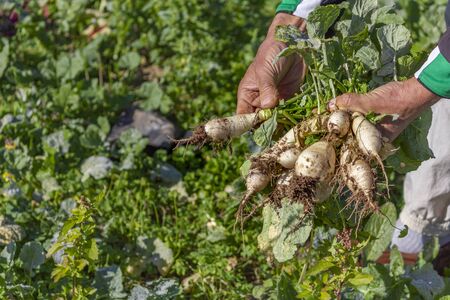1. Introduction: Understanding Climate Change in Indias Agri-Heartlands
India, with its rich tapestry of agri-zones stretching from the Gangetic plains to the Deccan Plateau, stands as one of the world’s foremost producers of staple crops like potato, onion, and garlic. However, over the past decade, climate change has emerged as a formidable challenge for both smallholder and commercial farmers across states such as Uttar Pradesh, West Bengal, Maharashtra, and Gujarat. Erratic monsoons, rising temperatures, and unseasonal rainfall have begun altering age-old farming calendars and disturbing local crop cycles. For Indian farmers, whose livelihoods are intimately tied to timely rains and predictable seasons, this unpredictability is more than an inconvenience—it is a direct threat to household incomes and food security.
For urban dwellers from Mumbai to Chennai and for kitchen managers in every Indian home, the price and quality of daily staples are closely linked to what happens on these fields. As climatic patterns shift, so too does the availability of sabzi mandi favourites—potato for aloo dishes, onion for tadkas, and garlic for chutneys and gravies. The impact is felt not just in rural heartlands but right up to bustling city markets. Understanding how climate change shapes agricultural outcomes is crucial; it helps us appreciate why adaptation—through innovative farming practices and resilient supply chains—is vital for ensuring affordable and nutritious food reaches every thali across India.
2. Significance of Potato, Onion, and Garlic in Indian Food Basket
Potato, onion, and garlic are not just ingredients in Indian kitchens; they are the backbone of daily meals and integral to the nation’s food security. These staple vegetables bring unique flavours and nutrition, connecting millions of households from Kashmir to Kanyakumari. Their consistent presence in sabzis, curries, chaats, and biryanis reflects their indispensability across urban and rural India.
Cultural Importance in Daily Life and Festivals
Across India, these vegetables hold a special place in both everyday cooking and festive celebrations. Potatoes form the core of popular dishes like aloo paratha, samosa, and vada pav. Onions are essential for tadka (tempering) in dals and gravies, while garlic is prized for its medicinal properties and distinctive taste. During festivals such as Diwali and Navratri, dishes prepared with potatoes cater to fasting rituals, while onions and garlic often feature in celebratory feasts.
Economic Contribution to Local Communities
The cultivation and trade of potato, onion, and garlic support millions of Indian farmers and traders. These crops are central to the agricultural economy of states like Uttar Pradesh, Maharashtra, West Bengal, Gujarat, and Madhya Pradesh. They generate employment along the value chain—from sowing and harvesting to transport and market sales—boosting rural livelihoods.
Key States Producing Potato, Onion, and Garlic
| Vegetable | Main Producing States |
|---|---|
| Potato | Uttar Pradesh, West Bengal, Bihar |
| Onion | Maharashtra, Karnataka, Gujarat |
| Garlic | Madhya Pradesh, Rajasthan, Gujarat |
Role in Price Stability and Food Security
Fluctuations in the yield or price of these staples can lead to widespread impact on household budgets and overall inflation. For example, a spike in onion prices is often considered politically sensitive due to its direct effect on common man’s kitchen expenses. Ensuring steady production of these vegetables is crucial for food availability throughout the year.
Thus, potato, onion, and garlic are much more than mere vegetables—they are woven into the fabric of Indian society through culture, cuisine, economy, and daily sustenance. Their importance makes them highly vulnerable to the threats posed by climate change.

3. Climate Impacts: Shifting Seasons and Yield Fluctuations
In recent years, Indian farmers have been witnessing significant changes in the climate, which directly impact the yield of key crops like potato, onion, and garlic. The most noticeable shifts are in rainfall patterns, temperature variations, and the increasing frequency of weather extremities across major agricultural belts from Punjab to Maharashtra and Tamil Nadu.
Unpredictable Rainfall Patterns
Traditionally, the onset of monsoon has been a reliable indicator for sowing times. However, erratic rainfall—either heavy downpours or prolonged dry spells—has become more common. In states like Uttar Pradesh and West Bengal, excessive pre-monsoon rains often delay potato planting, while insufficient winter rains hinder the growth phase of onions and garlic. These anomalies force farmers to adapt their schedules, sometimes risking sub-optimal yields.
Temperature Extremes Affecting Growth Cycles
The rise in average temperatures during both summer and winter months is another concern. Potatoes thrive in cool conditions; higher temperatures during tuber formation result in smaller yields and increased vulnerability to pests like the potato tuber moth. Onion and garlic, typically planted as rabi crops, face bolting—a premature flowering—when exposed to unexpected warmth during their vegetative stage. This reduces bulb size and overall market value for cultivators from Nashik to Bengaluru.
Weather Extremities: A Growing Threat
Heatwaves during late spring or sudden cold snaps in December can devastate entire fields within days. For example, unseasonal hailstorms in Madhya Pradesh have repeatedly damaged young potato shoots, while flash floods in Odisha wash away newly sown onion seeds. Such unpredictable events disrupt the delicate timing required for optimal sowing, growing, and harvesting cycles.
Adapting to New Realities
Indian farmers are increasingly turning to adaptive strategies—such as staggered sowing dates or drought-resistant seed varieties—to cope with these climatic uncertainties. However, these solutions come with added costs and risks. As seasons continue to shift unpredictably due to climate change, ensuring steady yields of potatoes, onions, and garlic remains a major challenge for India’s farming community.
Farmers’ Perspectives: On-Ground Challenges and Indigenous Solutions
Across the diverse agro-climatic zones of India, farmers growing potato, onion, and garlic are directly experiencing the harsh impacts of climate change. Their voices reveal a spectrum of practical challenges as well as ingenious adaptations grounded in local knowledge.
State-wise Experiences and Challenges
| State | Main Crop | Key Climate Challenge | Local Coping Mechanism |
|---|---|---|---|
| Uttar Pradesh | Potato | Erratic winter rainfall affecting tuber formation | Shift to early sowing & use of drought-tolerant varieties |
| Maharashtra | Onion | Heatwaves during bulb formation leading to yield loss | Mulching and drip irrigation to conserve soil moisture |
| Madhya Pradesh | Garlic | Unseasonal rains causing fungal diseases | Seed treatment with indigenous herbal extracts & crop rotation |
| Bihar | Potato & Onion | Flooding during critical growth stages | Raised bed cultivation and using traditional flood-resistant varieties |
| Tamil Nadu | Garlic & Onion | Drought stress due to prolonged dry spells | Rainwater harvesting and intercropping with legumes for soil health |
The Voices from the Fields: Adaptation and Resilience
Smt. Meena Devi, a potato farmer from Uttar Pradesh: “We have started sowing earlier than before and are using more organic manure. When rains are unpredictable, our traditional wisdom guides us better than any outside advice.”
Sri Ganesh Patil, onion grower from Nashik: “The old methods like mulching with dried sugarcane leaves help us save water. We also share weather updates on our WhatsApp group – it’s become an important support system.”
Kavitha R., garlic farmer from Tamil Nadu: “My family has always practised rainwater harvesting. Now, we mix pulses with garlic so that even if one fails, the other survives. This is how we spread risk.”
Cultural Knowledge as a Source of Strength
The resilience of Indian farmers lies not just in their hard work but in their ability to integrate modern practices with age-old indigenous knowledge systems. From community seed banks to collective weather-watching traditions, these homegrown solutions are critical in navigating climate uncertainties.
A Shared Path Forward: Collaboration and Support Needed
The lived experiences of farmers underscore the need for policy-makers, agri-scientists, and extension workers to value grassroots wisdom. Empowering farming communities through local training, participatory research, and digital communication tools can amplify these solutions across regions—making Indian agriculture more climate-resilient from the ground up.
5. Strategies for Adaptation: Research, Technology, and Community Innovations
Indian Agricultural Research Leads the Way
In response to the climate-driven challenges faced by potato, onion, and garlic farmers, several Indian agricultural institutes such as ICAR (Indian Council of Agricultural Research), CPRI (Central Potato Research Institute), and IARI (Indian Agricultural Research Institute) have intensified their research efforts. These institutes are developing climate-resilient seed varieties, including heat- and drought-tolerant potatoes from Kufri series and improved onion bulbs that mature quickly under fluctuating weather conditions. Scientists are also focusing on pest- and disease-resistant varieties to reduce crop losses, especially in states like Uttar Pradesh, West Bengal, and Maharashtra where these crops are major livelihoods.
Climate-Smart Farming Methods
Farmers across India are adopting climate-smart farming methods to address unpredictable rainfall patterns and rising temperatures. Techniques such as micro-irrigation (drip and sprinkler systems) help conserve water, particularly vital in semi-arid regions of Gujarat and Rajasthan. Intercropping with legumes improves soil health, while mulching conserves soil moisture—both gaining popularity from khet to mandi. The use of organic fertilizers and neem-based pest management is not only reviving traditional practices but also reducing dependence on chemical inputs.
From Mandi to Khet: Case Studies of Local Innovations
Grassroots innovations are emerging as powerful tools for adaptation. In Punjab’s potato belts, farmers’ collectives have set up weather monitoring stations that send real-time SMS alerts in local languages about upcoming heatwaves or unseasonal rains, helping farmers take timely action. In Nashik’s onion-producing villages, community storage facilities using low-cost cooling technologies have reduced post-harvest losses significantly. In Madhya Pradesh, garlic growers share best practices through WhatsApp groups moderated by Krishi Vigyan Kendras (KVKs), ensuring quick dissemination of actionable advice even in remote areas.
Strengthening Farmer Networks
The exchange of knowledge between scientists, extension workers, and farmers is critical. Initiatives like “Farmer Field Schools” enable smallholders to experiment with new technologies before wide-scale adoption. Government schemes such as PM-KUSUM promote solar-powered pumps for irrigation, making both environmental and economic sense for marginal farmers.
Towards a Resilient Future
The collective impact of scientific research, technology adoption, and community-driven solutions is enabling Indian farmers to better navigate the impacts of climate change on their potato, onion, and garlic crops. While challenges remain, the resilience being built from mandi to khet offers hope for sustainable agriculture and stable livelihoods across India’s heartland.
6. Policy and Way Forward: Building Resilient Supply Chains
Strengthening Government Schemes for Farmer Support
To ensure the sustainability of potato, onion, and garlic production amidst climate uncertainties, robust government intervention is essential. Schemes such as Pradhan Mantri Fasal Bima Yojana (PMFBY) offer crop insurance, helping farmers mitigate losses caused by erratic weather patterns. Additionally, initiatives like the National Horticulture Mission (NHM) promote technological advancements and infrastructure development in the horticulture sector. Expanding the reach of these schemes and simplifying their implementation can empower marginal and smallholder farmers, who form the backbone of Indias agri-economy.
Policy Reforms for Climate-Resilient Agriculture
Policymakers must focus on developing adaptive strategies to counteract the effects of climate change on key crops. This includes incentivizing the adoption of drought-resistant seed varieties, promoting efficient irrigation methods like drip and sprinkler systems, and encouraging sustainable soil management practices. Integrating climate-smart agriculture into existing policies can help maintain steady yields of potatoes, onions, and garlic even under adverse climatic conditions. State-level convergence with central schemes is also vital to address region-specific challenges faced by Indian farmers.
Collaborative Efforts: Public-Private Partnerships
The complexity of supply chain disruptions requires collaboration between government agencies, private stakeholders, research institutes, and farmer cooperatives. Investment in cold storage facilities, improved logistics, and value addition at the farm gate can reduce post-harvest losses—especially crucial for perishable crops like onions and potatoes. Companies engaged in contract farming can provide technical know-how and assured markets to growers, while NGOs can facilitate knowledge transfer related to sustainable practices.
Empowering Communities Through Capacity Building
Capacity building through targeted training programmes on climate adaptation, pest management, and market access can empower farmers at the grassroots level. Digital platforms such as e-NAM (National Agriculture Market) enable better price discovery and transparent transactions for producers across India.
The Way Forward: A Collective Commitment
Building resilient supply chains for potato, onion, and garlic production is not solely a policy mandate but a shared responsibility. By fostering a culture of innovation, resilience, and inclusivity within India’s agricultural ecosystem, stakeholders can safeguard livelihoods and ensure food security despite climatic uncertainties. The journey ahead calls for continuous policy evolution, collaborative action, and unwavering support for those who feed the nation.

